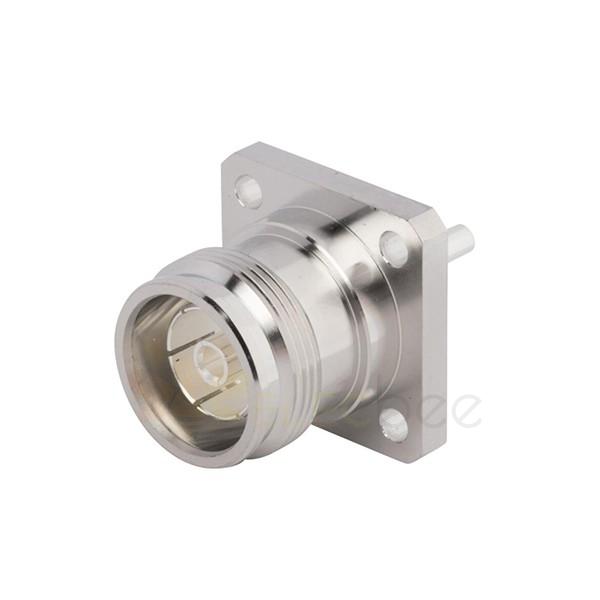Connectors are crucial components in the telecommunications industry, serving as a bridge between cables and devices. They ensure that data, signals, and power are transmitted efficiently and reliably. Among the various connector types available in the market, 7/16 DIN and 4.3/10 connectors are two of the most popular options. Although they may appear similar at first glance, a closer look reveals significant differences in terms of performance, design, and compatibility. In this article, we will explore the distinctions between 7/16 DIN and 4.3/10 connectors and their applications.
Design and Performance
The 7/16 DIN connector is a threaded RF connector with a 7mm inner diameter. It was initially developed for military applications and has since become a standard in the telecommunications industry. The connector features a screw-on mechanism that provides a secure and stable connection, making it ideal for high-power applications. The 7/16 DIN connector can handle up to 5000 watts of power, making it suitable for use in high-power transmitters, base stations, and mobile networks. Its frequency range is up to 7.5 GHz, making it ideal for high-frequency applications.
On the other hand, the 4.3/10 connector is a newer and more compact connector that was specifically designed for use in modern wireless networks. It has a smaller form factor than the 7/16 DIN connector, with a 4.3mm inner diameter. Despite its smaller size, the 4.3/10 connector can handle up to 3000 watts of power, making it suitable for high-power applications. Its frequency range is up to 6 GHz, making it ideal for modern wireless networks that operate at high frequencies. The 4.3/10 connector also features a push-pull mechanism that allows for easy and quick installation and removal.

Compatibility
One of the essential factors to consider when choosing a connector is compatibility. The 7/16 DIN and 4.3/10 connectors are not interoperable due to their different designs and sizes. However, both connectors are compatible with various cable types, including corrugated, semi-rigid, and flexible cables. They are also compatible with different types of devices, including antennas, amplifiers, and repeaters.
Applications
The choice of connector depends on the specific application and the requirements of the system. The 7/16 DIN connector is primarily used in high-power applications, such as base stations, mobile networks, and broadcast applications. Its high power handling capabilities and stable connection make it ideal for these applications. The 4.3/10 connector, on the other hand, is designed for modern wireless networks that operate at high frequencies. It is commonly used in small-cell networks, distributed antenna systems (DAS), and in-building wireless networks.
Conclusion
In conclusion, the differences between 7/16 DIN and 4.3/10 connectors are significant and depend on the specific application requirements. The 7/16 DIN connector is a standard in the telecommunications industry, known for its high power handling capabilities and stable connection. It is ideal for high-power applications such as base stations, mobile networks, and broadcast applications. On the other hand, the 4.3/10 connector is a newer and more compact connector designed for modern wireless networks that operate at high frequencies. It is suitable for use in small-cell networks, distributed antenna systems (DAS), and in-building wireless networks.
When choosing a connector, it is essential to consider factors such as compatibility, power handling capabilities, and frequency range. Both connectors are compatible with various cable types and devices, making them versatile and widely used in the industry. However, they are not interoperable due to their different designs and sizes.
In summary, the choice between 7/16 DIN and 4.3/10 connectors depends on the specific application requirements, power handling capabilities, and frequency range. Understanding the differences between these two connectors is crucial in ensuring that the system operates efficiently and reliably.






